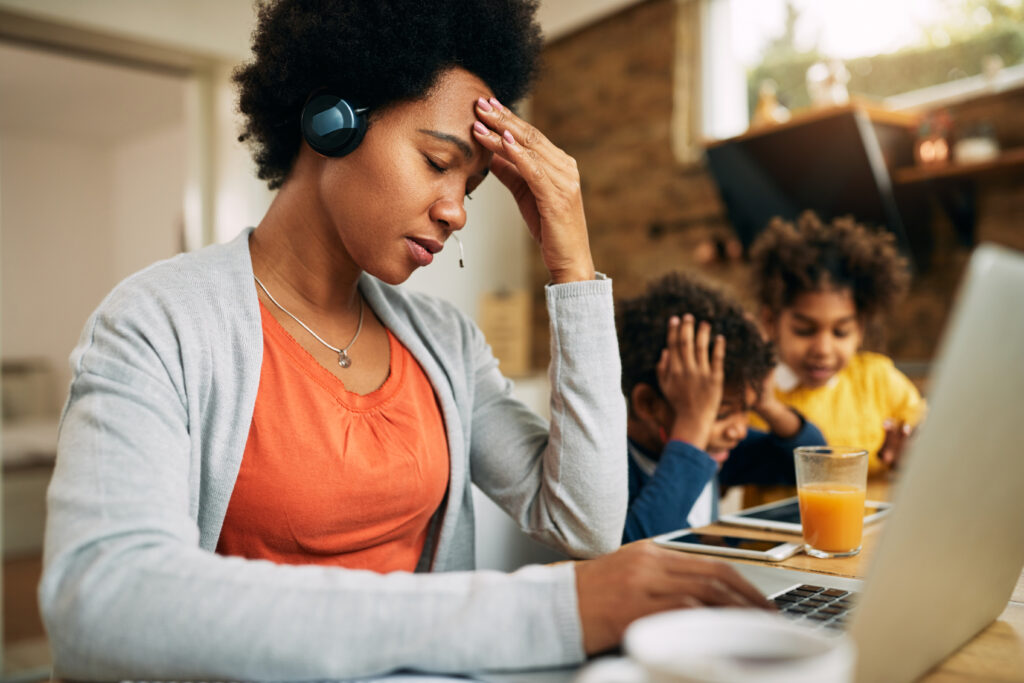As we approach the next ACT public school pupil free day, I have been reflecting on the demands we are placing on our working parents – and more specifically mums around the country.
For my part, finding the leave required to cover school holidays, COVID isolation and school pupil free days often seems impossible.
COVID has changed all of our lives and it is fair to say that everyone should shoulder some of the extra work, changes and the burden of the pandemic.
Unfortunately, however, the burden, just like the risk, is not fairly distributed and is often allocated based on nothing more than luck – our ethnicity, our predisposition to illness, our ability or disability, and whether our marriage survives the test of time.
In a paper published in the Australian Journal of Economics, Leonora Risse and Angela Jackson write:
” Single-parent mothers, Aboriginal and Torres Strait Islander women, women living with a disability, LGBTIQ women, migrant women, and women from culturally and linguistically diverse backgrounds are among those for whom the economic impacts of the pandemic have generally been more severe”

Claire Sullivan believes the burden, just like the risk, is not fairly distributed and women are shouldering the burden. Picture: Shutterstock
The amount of leave employees have from work compared with the amount of leave kids have from school has always been a tricky balancing act – and that‘s assuming that there are at least two adults sharing the responsibilities.
Now, to help ease the pressures on our over-burdened schools, parents with school-aged children in the ACT public schools are being asked to find an extra two days of leave per term to cover the new pupil free days to give teachers time for lesson planning and administrative tasks. Arrangements vary depending on where you live, for example NSW has five school development days per year. The Queensland Government delayed school resuming at the beginning of 2022 by two weeks to avoid opening schools in the predicted peak of the Omicron wave.
For single parents, the ability to work and generate an income is even more important and is becoming more and more difficult as they struggle with a load that often seems impossible and is growing.
The struggle to bridge the disconnect between workplace expectations and the school system especially when it comes to leave is not exactly new. Traditionally, children had approximately 12 weeks of leave per year. Two parents in an average fulltime working household can access approximately 8 weeks of paid leave per year – which represents a shortfall of 4 weeks on the scheduled school holidays, and means that the family will never have a holiday together at the same time.
For example, Ashleigh*, a happily married healthcare worker with a husband working in IT, explained to me:
“The problem with being the parent who earns less is that your job isn’t considered as ‘valuable’ so you are the one to take paid and unpaid leave to cover the children’s care requirements”
And that is before we even considered the gender of the carers and the diversity of families more broadly.
A growing number of family households are no longer two parent (almost 14% in 2021) and a large number of divorced parents don’t share custody evenly. Women represent 73% of sole and majority custody single parent households in Australia which naturally means that this impossible task is falling disproportionately on them.
With two pupil-free days per term, parents need to find another 8 days of leave. With the rate of COVID transmission experienced so far, it’s fair to assume that most families also need to find another week if not two per year to cover COVID isolation periods. For a two-parent family or a divorce household with a 50/50 shared care arrangement they need to find over seven weeks off work per year when the standard annual leave provision in most Canberra jobs is 4 weeks.
For a sole carer, that figure is at least 14.5 weeks. Jennifer*, a sole parent who works full time, says:
“As a single mum, I nearly burst into tears when I read the emails about all the pupil free days! I’m just at the end of my rope with it. Especially after 2 years of pandemic”
There’s no question that our schools have been put under enormous stress and our teachers bear the brunt of it. Most schools are struggling with the impact of COVID isolation requirements which is highlighting a shortage of teachers and relief teachers. Most schools are implementing measures to ‘cope’ through splitting classes – distributing students in classes where the teacher is sick into other classes and asking teachers to teach a much larger group – or losing classes and cohorts – asking students to learn from home to reduce the teaching and supervision requirements for schools.
However, we need to ask whether putting the burden back onto parents – another overstretched cohort – is the answer.
*Names changed
Clare is the Operations Manager for the 50|50 Foundation at the University of Canberra. Clare is a passionate feminist with a highly attuned gender lens which scrutinises our society and works to makes it a more inclusive and a better place for future generations. With over 20 years’ experience in governance and government relations experience working for all three levels of government, Clare brings unique mix of experience that covers the political realm, public policy and public service, and advocacy. Clare connects the Foundation with a wide range of stakeholders and is responsible for the operational delivery of our programs.





